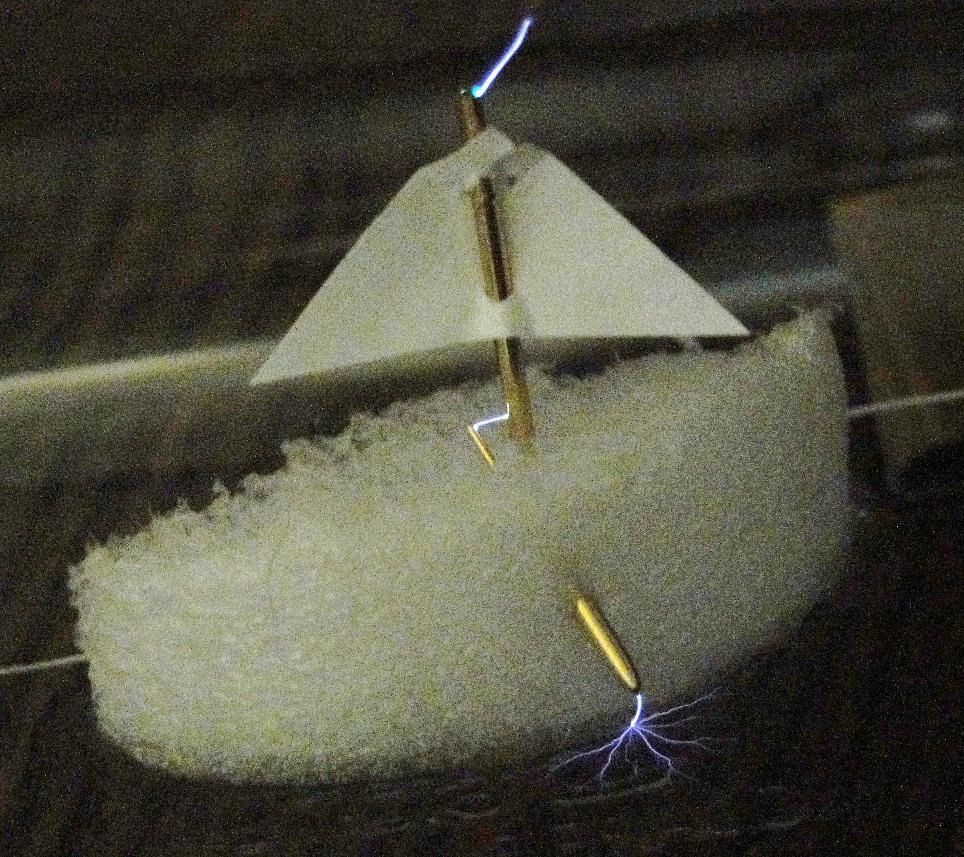My .02
FYI, "grounding" the mast does not mean you need to have a chunk of bare metal in the water. It means you need to provide a method for the charge to get into the water that over competes with damaging side flash. Dr. Thomson Siedarc electrodes are not actually in the water, just above the water surface but these provide a good method to discharge the strike. Bonding to a metal keel that is painted so not actually conducting to water is also good grounding..
Regarding chain, when I was messing with the floating discharge surface conductor (post 30), I actually measured the inductance of a length of chain (I am a retired MSEE, did this sort of thing in my career), chain has a much higher inductance per length and weight than say a four gauge wire. Inductance delays response so something like four gauge wire makes a much better down conductor.
But... your idea to ground the mast to the anchor rode is not a bad one, everything about lightning is just doing what you can to improve your odds. Somethings are better than others.
My opinion especially for a trailer sailor with an ungrounded mast (you can never prove any of this) is that a four gauge wire with good bonding to the mast and adequate bend radius that just hangs over the side with the end of the wire near the water surface is about as good as you can do in fresh water and fairly simple. Put one on each side and have the wire run past the side stays so it forms a spark gap to the stay. If you want to get fancy, make a simple float at the end of the wire to always keep it just above the water surface.
Here is a picture again that I took when messing with all that stuff a bunch of years ago showing the surface discharge in fresh water (our lab had an ESD tester, snuck in this test while at work). FYI, a discussion involving electric fields will explain everything happening in the picture.

FYI, "grounding" the mast does not mean you need to have a chunk of bare metal in the water. It means you need to provide a method for the charge to get into the water that over competes with damaging side flash. Dr. Thomson Siedarc electrodes are not actually in the water, just above the water surface but these provide a good method to discharge the strike. Bonding to a metal keel that is painted so not actually conducting to water is also good grounding..
Regarding chain, when I was messing with the floating discharge surface conductor (post 30), I actually measured the inductance of a length of chain (I am a retired MSEE, did this sort of thing in my career), chain has a much higher inductance per length and weight than say a four gauge wire. Inductance delays response so something like four gauge wire makes a much better down conductor.
But... your idea to ground the mast to the anchor rode is not a bad one, everything about lightning is just doing what you can to improve your odds. Somethings are better than others.
My opinion especially for a trailer sailor with an ungrounded mast (you can never prove any of this) is that a four gauge wire with good bonding to the mast and adequate bend radius that just hangs over the side with the end of the wire near the water surface is about as good as you can do in fresh water and fairly simple. Put one on each side and have the wire run past the side stays so it forms a spark gap to the stay. If you want to get fancy, make a simple float at the end of the wire to always keep it just above the water surface.
Here is a picture again that I took when messing with all that stuff a bunch of years ago showing the surface discharge in fresh water (our lab had an ESD tester, snuck in this test while at work). FYI, a discussion involving electric fields will explain everything happening in the picture.
Attachments
-
235.8 KB Views: 189
Last edited:








